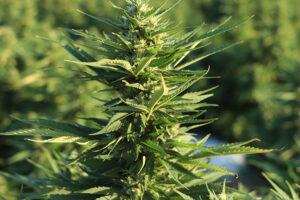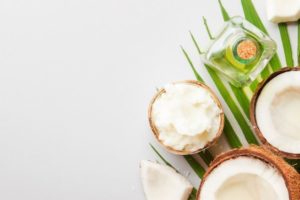There is a passionate interest across the United States in CBD. The non-psychoactive cannabinoid is now legal in all 50 states. This interest has spawned everything from CBD-infused foods to beverages to lotions to supplements.
The appetite for CBD will likely increase as more states approve the recreational use of cannabis. Illinois became the 11th state to fully legalize cannabis, doing so at the beginning of 2020. According to the Illinois Department of Federal and Professional Regulation, the first five days of business saw 271,169 transactions with nearly $11 million in sales.
If you have an interest in entering the CBD industry, the time for action is now. Of course, that requires having an organized strategy when it comes to creating, building, and marketing a company. To help prospective business owners get their foot in the door, here is what they need to know to create a CBD oil business plan.
Elements of a CBD Oil Business Plan
The US Small Business Association has an outline for what people should include in a CBD oil business plan. It lets people develop a foundation for their company, even if they have no prior experience. The USSBA recommends including:
- Executive summary
- Company description
- Market analysis
- Organization and management structure
- Service or product
- Marketing and sales
- Funding request
- Financial projections
- Appendix
These elements allow future business owners to examine a potential company from the inside out before committing to the investment. Whether someone picks a lean or traditional business plan, the key is to pick one that works based on their needs and abilities. Here is a deeper dive into the broader components.
Research, Research, Research
There is no such thing as too much research when it comes to a CBD oil business plan. The information here will lay the foundation for every aspect of the company moving forward, from branding to inventory to the target audience. The two critical areas of emphasis are market research and competitor research.
Market Research
Market research takes a quantitative and qualitative look at the CBD industry. It takes into account the size of the market, the total value, and various other factors. That can include (but is not limited to) buying trends, barriers to entry, regulations, future legislation, and the economic environment.
Most people who are opening a CBD business are doing so with modest, yet scalable ambitions. Therefore, they should take a localized approach to research. However, if their ambition is to operate a national channel, they will need to assess the CBD market on a national scale.
It is essential to know the number of people in the market and the market value. This means you also need to clearly define your target audience. For instance, a CBD business that centers around cosmetic products may only cater to customers and companies in the beauty industry.
As for the market value, Forbes estimates that the CBD industry could reach $20 billion by 2024 globally. That figure will differ if the customer base is a local one. According to PR Newswire, the industry has a projected 107 percent growth for 2020.
After this market analysis, prospective business owners should be unofficial experts in the field. It is their responsibility to know as much as possible. As a result, they can create a business that attracts a loyal audience while remaining unique from the competition.
Competitor Analysis
Someone can have the best idea for a business, but the journey to success with be fraught with difficulties if there is market saturation. The research stage allows new business owners to find untapped niches and demographics within the industry. This requires understanding the strengths and weaknesses of competitors, and figuring out what will give the new business a competitive edge.
The analysis should feature consistent benchmarks as a way of comparing competitors. Taking the time to look at these numbers next to each other can reveal previously unrecognized insights. Some useful figures include:
- Brand voice
- Company culture
- Company reputation
- Delivery options
- Number of employees
- Number of stores and location
- Prices
- Products
- Quality of products
- Revenue
- Social media and marketing strategy
- Target audience
- Variety
The competitor analysis is also the time to ask important questions like, “What is preventing other people from opening a CBD oil business next door?” Additionally, people should examine what will make them successful compared to their competitors. These insights can guide a company towards a distinct brand and product that becomes a mainstay in the industry.
Create a Profile of CBD Oil Business
A business profile answers these questions about a business: who, what, when, why, and how? It provides a broad overview that explains the history of the organization, its products or services, its audience, and how it is meeting a need or solving an important problem. People can often find this information located in a business’s “About Us” section on their website.
The term for this type of profile is an executive summary. It highlights several aspects of a company and lets outsiders get a feeling for its organization, its owners, and its market. The executive summary is critical if the business is going to have outside funding.
In that case, the synopsis should hit on key individuals, how they will use funding and potential exit strategies. This step is also a golden opportunity to highlight past achievements in individual biographies. Remember, the executive summary is the only thing some people read.
While the executive summary serves as a brief introduction, most people place it at the end. That is because, to the founders, it serves as a holistic summary of their research and planning. Of course, as long as it captures people’s attention, it does not matter where it is placed.
Regardless, the executive summary should be concise and to the point. Writers should not overcomplicate things. Instead, they should present the research in a simple and easy-to-read manner. Make sure to prioritize sections based on their overall importance, too.
Develop a Strategic Marketing Plan
Creating a strategic marketing plan requires specific goals. These propositions will serve as motivation for employees as well as a benchmark for success. Goals can include everything from market penetration to sales projections to social media presence. Here are a couple of areas where business owners may consider setting objectives:
- Begin cross-selling products
- Boost sales for a product or service
- Boost sales within a specific demographic or price range
- Create connections with influencers or outside vendors
- Expanding the geographic and digital presence of the company
- Expanding the market for CBD products
- Improving manufacturing, distribution, packaging, marketing, or product delivery
- Improving product quality
- Increase prices without hurting sales or growth
- Introducing new CBD products to the market
Each goal should focus on “what” and “why” the company is doing it. These reasons will inform the purpose of the company and its reasons for action and growth. The answers to these questions are more accessible if a business knows its target audience.
The target audience of a CBD oil business plan is another important term. It refers to the group of real or prospective customers your company is aiming at. In recent years, these groups have become hyper-specialized and segmented due to increasing competition. A company needs to determine what makes their business different than competitors so that they can relay that message to the target audience.
If a company is unsure about its target audience, it helps to walk through fundamental descriptors. Business owners should have an idea of their average customer based on sex, age, race, lifestyle, education, income, and geography. More in-depth descriptors will ask whether or not clients are leaders or followers, traditional or progressive, and so forth.
The target audience will inform how a CBD oil company should proceed with its marketing tactics. For instance, if the clientele is older, then outdoor billboards, print advertisements, and television commercials may be ideal. More likely, though, business owners will want to use a mixture of marketing strategies, including email, social media, and digital platforms.
A strategic marketing plan should highlight potential growth areas, too. While the current budget may not accommodate an investment in these areas, identifying these opportunities provides a blueprint for future improvement. The easiest way to find growth areas is to see what the competition is and is not doing.
For instance, a local CBD oil business may have products catering to a broad spectrum of customers, including middle-class Americans. The oils are popular yet generic. This information alone suggests there is a potential opportunity for highly personalized products or luxury CBD if the market can support it.
Current and Future Finances
A well thought out marketing plan should include an evaluation of the company’s current and future financial health. That requires business owners to look at fixed and variable costs. Fixed expenses are permanent, such as rent and interest payments, while variable expenses are flexible, such as labor and CBD materials.
Current Expenses and Income
One of the significant expenses will come in the form of loans. Whether a company works with the USSBA or a local bank, they will have to set aside money to pay their creditors. Creditors will want to see a strategy for repayment in the CBD oil business plan so that they can be confident business owners will use their money responsibly.
These expenses are the building blocks for company finances. Business owners should also look at their cash flow statement, which highlights the day-to-day revenue versus costs. Comparing and contrasting these two elements can offer insights into whether or not a company needs short-term financing or can expand.
A critical mark is the break-even point. It is a formula where the total fixed costs are divided by revenue per CBD product minus variable costs per unit. Put in layman’s terms: it is the point where a company does not have losses or profit.
The break-even point is significant because almost every company starts with debt, whether that is from loans, physical space, or purchasing inventory. This mark represents a milestone on the way to profitability. Reaching it requires business owners to estimate how much they have to sell to pay back investors, as well as creating a timeline for when they can hit it.
Future Expenses and Income
Every CBD oil business plan needs to include sales projections. These figures provide insight into how many employees a company can have and how much CBD inventory to stock. When sales projections are accurate, they allow business owners to increase sales, strategically plan growth, and properly allocate the budget.
Sales forecasting is a complicated matter. Forecasters have to consider the general state of the economy as well as the industry. They must also analyze consumers, trends, changes within the company, and past performance.
There are a couple of different ways to forecast sales projections. Some methods are inherently more straightforward than others. However, accuracy is the key here. The most popular methods include:
- A Jury of Executives: experts in CBD market factors get together to create estimates
- Sales Team: a company works with sales personnel to gauge future revenue based on their familiarity with consumers and trends
- Test Market: a company may release a CBD product in a limited geographic area to test how well it sells. The results will allow for an informative forecast and answer whether or not the business should add the product to the inventory
- Consultant: an outside expert will provide sales projections
Show People the Company Cares
Business owners create companies with the intent of adding something new, and hopefully better, into the world. Most times, they are offering a solution to a problem. Regardless of the product or service, the goal is to make customers’ lives better.
Taking the time to talk about the motivations and inspirations for the company can make a world of difference when connecting with consumers. That is because the needs and interests of customers are changing. It is no longer good enough for a company to simply broadcast a commercial or post a billboard and assume they will develop a meaningful relationship with consumers.
Changing Demographics
Currently, 52 percent of the population in the United States are Millennials (1981-1995) and Generation Z (1995 to 2015). This group of 171.1 million people has grown up with social media and the internet. Digital and social platforms are a second language and are the basis for interaction and connection.
While Millennials and Generation Z are distinct, they share many similarities. For instance, they are mobile natives and technologically savvy. Furthermore, they want brands that share their values.
Any CBD oil business plan should hone a message that demonstrates a commitment to the ideals and passions of this consumer base. The content should leverage content marketing to reinforce this connection continually. That said, it should not include hard selling, which is an aggressive advertising technique for selling products and services.
Millennials and Generation Z are pragmatic and discerning. Companies that create meaningful content will have an inside path to earning their long-term loyalty. That loyalty will pay dividends in the form of online evangelism and word-of-mouth marketing.
Connecting with Customers
Connecting with customers is easier said than done. Author and motivational speaker Simon Sinek shared some helpful insights into the subject during his TED talk about inspirational leadership in 2014. Sinek argued that all great communicators—from Martin Luther King to Apple—communicate with the same method.
To understand this method, let’s first look at how most companies communicate. Envision three concentric circles with the smallest inner circle saying “Why,” the middle one says “How,” and the last larger circle says, “What.” Here is how Sinek defines these terms:
- What: every organization knows what they do
- How: some organizations understand how they do business, which some people call a differentiated value proposition
- Why: few organizations understand the why or purpose behind their business.
Most companies communicate from the outside inward. They talk about what they do, how they do it, and why someone buys their products. The inspirational leaders and companies reverse this approach and start from the inside and move outward.
Sinek uses Apple as an example. If Apple were a traditional company, they would say, “We make great computers,” which represents the “what.” The “how” and “why” are “they’re beautifully designed, simple to use, and user-friendly” and “Want to buy one?”
However, Apple does not use this approach. Instead, they start with the “why,” which is “In everything we do, we believe in challenging the status quo.” The “how” and “what” follow as “the way we challenge the status quo is by making our products beautifully designed, simple to use, and user-friendly,” and “We just happen to make great computers. Want to buy one?”
Reversing the order of information will allow the CBD oil business plan to connect with investors, customers, and the general population. It creates an identifiable purpose and meaning for the products and services that can tap into the deepest interests of consumers. The bottom line is this: it is essential to understand why a company is in the CBD oil business and to communicate that purpose effectively to its audience.
FAQs About How to Make a CBD Oil Business Plan
Question: How to make a CBD oil business plan?
Answer: Begin cross-selling products, boost sales for the product or service, creating connections, improving product quality, and expanding your market are some of the plans you can include.
Question: What are the common elements of the CBD oil business plan?
Answer: Some of the most common elements in creating a CBD oil business plan include an executive summary, company description, market analysis, and service or products.
Question: What are the research studies you should focus on creating CBD oil business plans?
Answer: Market research and competitor research are the most common types you should focus on.
Question: What you should include in doing market research for a CBD oil business plans?
Answer: It is essential to know the number of people in the market and the market value. This means you also need to clearly define your target audience. For instance, a CBD business that centers around cosmetic products may only cater to customers and companies in the beauty industry.
Question: What you should include in creating a competitor research for CBD oil business plans?
Answer: Some of the common things you should include are revenue, target audience, quality of products, company culture, and price.






